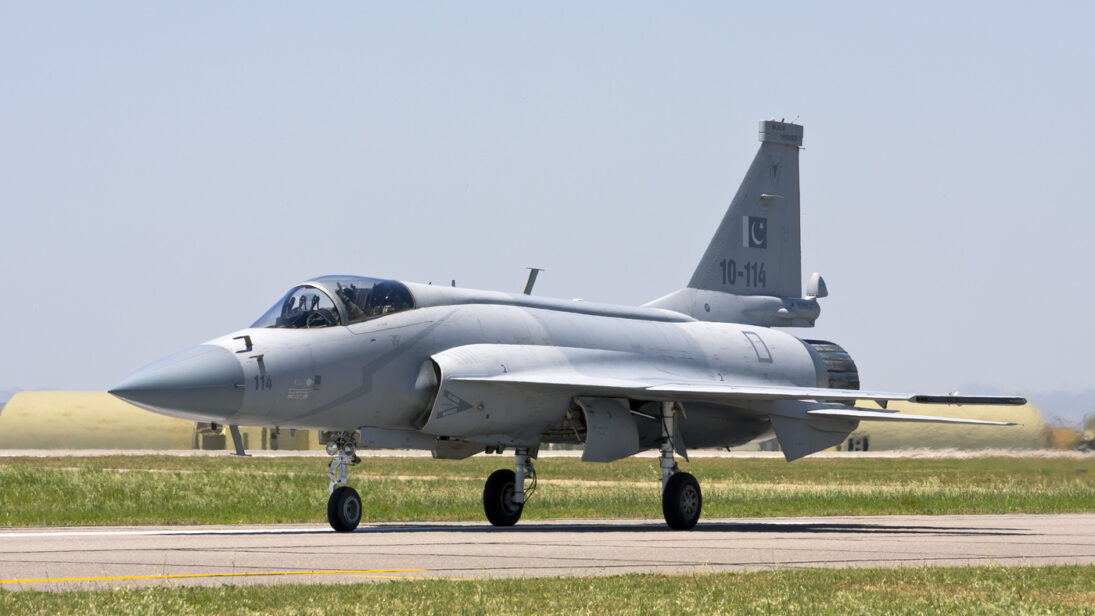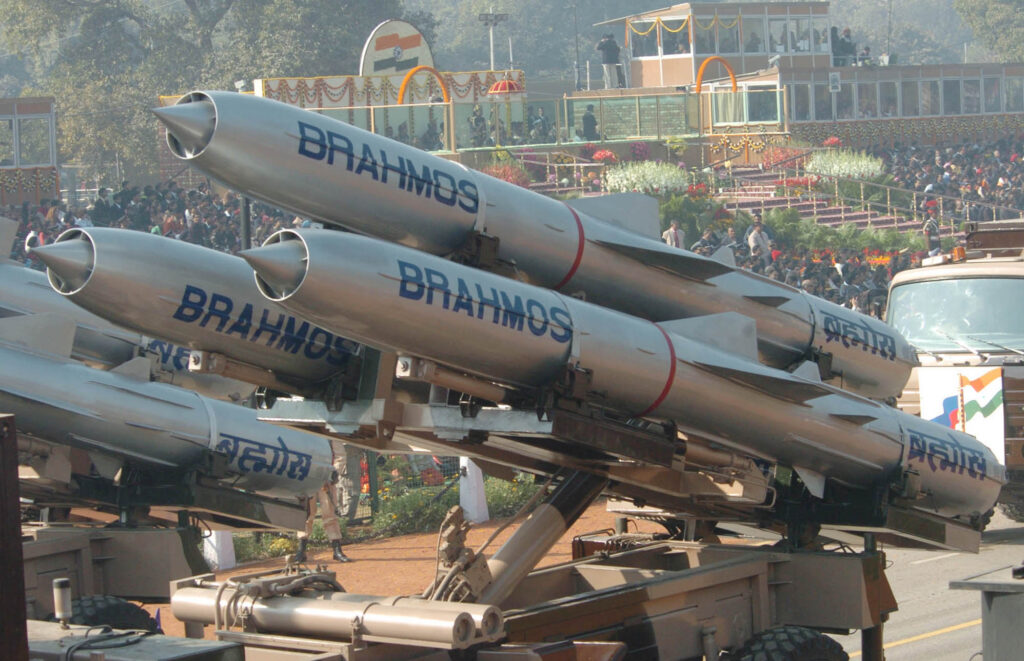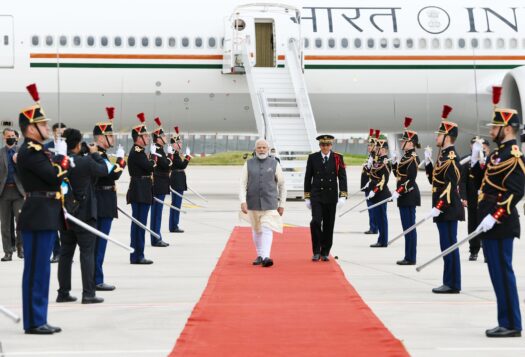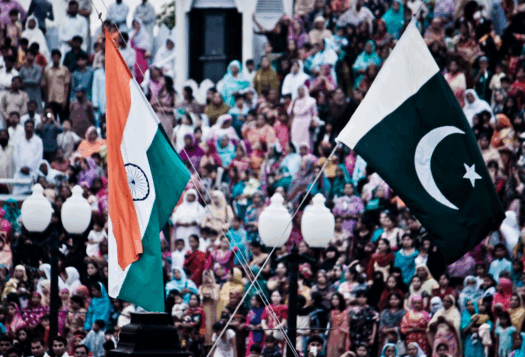
The four-day kinetic confrontation between India and Pakistan ended in a ceasefire on May 10, 2025, but observers are still grappling with the sequence of strikes and counterstrikes, assessing claims of damage by both sides, and parsing strategic narratives. On May 13, 2025, Andrew Small spoke with South Asian Voices Editor-in-Chief Akriti Vasudeva Kalyankar and Associate Editor Elizabeth Zazycki on the implications of the use of Chinese-made weapons in this crisis, the debate about the role the United States played in deescalating the situation, and the implications of both on regional dynamics and U.S. policy in the subcontinent. Small is a Senior Fellow in the Indo-Pacific Program at the German Marshal Fund. He is the author of the books The China-Pakistan Axis and No Limits: the Inside Story of China’s War with the West / The Rupture: China and the Global Race for the Future.
What role did actors like China play in the recent India-Pakistan crisis, and how is this different from what we’ve seen in the past two decades, particularly after the Uri attack/surgical strikes in 2016 and the Pulwama/Balakot crisis in 2019?
There have been distinct phases of Chinese involvement in India-Pakistan crises since the nuclearization of the region. The first ran from Kargil through to Mumbai, and the second from Uri through Pulwama. 2025 is different again. The earlier crises saw relatively high levels of U.S.-China coordination. Both sides used their channels and leverage to try to prevent escalation, with the United States usually attempting to play a neutral role, while China, although providing the Pakistanis with diplomatic protection, was also willing to put them under pressure.
The Uri crisis was the first incident where that shifted. The U.S. view was that lofty even-handedness was no longer consistent with the burgeoning Indo-U.S. relationship, while patience with Pakistan was far more strained than in the 2000s. So, while still wanting to ensure that the crises didn’t escalate, there was a deliberate U.S. tilt to India, giving them practical support, stronger political backing, and space to act. Conversely, China-Pakistan relations were in a major expansion phase with the launch of the China-Pakistan Economic Corridor (CPEC) and the deepening of defense ties. This cut both ways – on the one hand, it meant strengthened Chinese political and security backing to Pakistan, which was only magnified by the perceived need to counterbalance the new US-India dynamic. On the other hand, it meant China was even more concerned that Pakistan handle relations with India carefully, since Chinese economic projects and personnel were at risk. This had been a precondition for Beijing committing to CPEC in the first place. So, from 2016-2019, you can say that despite its own more overt Pakistan tilt, in some respects China still operated as a factor of restraint.
By the time of Pahalgam, these dynamics look quite different. The China-Pakistan relationship has deteriorated, with CPEC stalled and significant concerns from Beijing about the political, economic and security situation in Pakistan. There isn’t that sense anymore of a broader Chinese strategic bet on Pakistan and there isn’t the same level of closeness as a decade ago. At the same time, China has been trying to stabilize ties with India—however limited in scope that will be—to better set itself up to deal with the Trump administration. Beijing at least wanted to avoid jeopardizing the recent progress by handling the crisis in a way that was excessively antagonistic to India.
So, on the political side, the result has been China taking a step back compared to earlier crises. China could have swung in forcefully after the Indian strikes in a more critical way but did not. It made general calls for restraint and offered some protection of Pakistan at the United Nations, but it was all relatively limited. Although we don’t yet know the full story, there is little evidence so far that China pushed particularly hard behind the scenes with Pakistan as the crisis escalated. Instead, it appears that the United States emerged again as the actor with channels to both sides, coming in late and playing a seemingly more consequential role.
However, there is a very different picture on the security side. This is the first occasion where higher-end Chinese equipment has played such a sweepingly consequential role, and so overtly advertised too. The Pakistani military had a different balance of platforms even in 2019, but it’s now heavily Sino-centric. This is the more traditional version of the relationship—China providing Pakistan with critical capabilities—but those capabilities are far better than they used to be, and the nature of the defense cooperation is even deeper.
The post-Pahalgam crisis was an important test for Chinese systems that, while neither new nor representing the most cutting-edge PLA capabilities, had not previously seen combat. […] It is still early days but very provisional assessments suggest that the Chinese fighter jets, missiles, radars, and airborne warning and control systems performed well together, while that was evidently less true of the air defense systems.
Historically, there has been at least some U.S.-China coordination in South Asian crises. Have we heard anything about U.S.-China coordination this time around?
While I did not hear any specific claims of coordination between the U.S. and Chinese side, we know that the diplomatic channels that existed in the Biden administration, such as between Jake Sullivan and Wang Yi, don’t operate in the same way as before. Even since the late Obama administration, though, there just hasn’t been a view in either Beijing or Washington that the two sides should play this supervening “coordinate from above” role in crises on the subcontinent. Rather, they would lean to their respective sides, including with intelligence and diplomatic backing. So, it would have been a surprise if that had suddenly changed.
How significant is the recent India-Pakistan conflict as a real-world testing ground for Chinese military technology against Western systems, particularly given that there is wide reporting but no official confirmation yet that Pakistan’s J-10C fighters reportedly downed Indian-owned French Rafales, and what implications might this “advertisement” for Chinese arms exports have for the broader strategic competition between China and the United States in the Indo-Pacific region?
The post-Pahalgam crisis was an important test for Chinese systems that, while neither new nor representing the most cutting-edge PLA capabilities, had not previously seen combat. Although China has for a long time been Pakistan’s largest military equipment supplier and provided crucial support to its nuclear and missile programs, there were still important areas where Pakistan relied on Western defense platforms. But Pakistan has—by necessity—transitioned to an even more China-centered framework in recent years. The big question was whether this would create a clear conventional disadvantage against India, which has access to a far wider range of options, including Russian, U.S., European, and Israeli kits.

The answer so far seems to be that Chinese equipment has held up reasonably well. One likely byproduct of this is that if Pakistan retains deterrence capacity on the conventional side, it might diminish the likelihood of escalating to nuclear options. It is still early days but very provisional assessments suggest that the Chinese fighter jets, missiles, radars, and airborne warning and control systems performed well together, while that was evidently less true of the air defense systems. The J-10C with the PL-15 missile likely shot down the Indian aircraft, though we await definitive confirmation.
However, the claims that this is another “Deep Seek moment” are a stretch, given that these are not the most advanced systems, nor representing any notable technological breakthrough. There are some broader implications though; the China-Pakistan relationship has always been used by Beijing for its demonstration effect, and in this case, it helps China to show that such a Sino-centric defense relationship still enables countries to go up against adversaries that have access to high-grade Western equipment. China wants to make the case that a close, quasi-alliance type defense relationship with Beijing is worth having. There may be ramifications for Chinese defense exports, and there will be intense analysis of the performance of specific equipment in the coming weeks, given the implications for other contingencies in the Indo-Pacific and beyond. But there are politico-strategic consequences too.
You have previously mentioned that China-Pakistan relations are at a lower ebb than a decade ago. There were reports tying this cooling to Beijing’s concerns about the security of Chinese nationals in Pakistan. Do you agree with this assessment, and if so, how do you believe it has affected China’s approach to the current crisis?
The two sides are generally good at keeping their differences quiet, but that is an area of tension that has bled into the public domain. The security of Chinese nationals is a point of high sensitivity, which Xi Jinping seems to take particularly seriously. When China’s supposedly closest partner cannot adequately protect Chinese workers, it damages the relationship. China expects the Pakistani army to handle this and doesn’t give them a pass for the fact that the attacks come from groups the army itself is fighting. They view Rawalpindi as culpable for the broader security landscape—including developments in Afghanistan and dynamics with the TTP—since some of them were groups that the ISI had relationships with, and the outcome in Afghanistan resulted from the Pakistani army’s own strategy. It’s not just about personnel security though—Beijing believed it was making a big commitment to Pakistan with CPEC and is not happy with the result; that reflects some structural factors in the Pakistani economy but also the state of Pakistani politics in recent years, which China again attributes to choices the army has made.
It doesn’t mean that China won’t provide the Pakistani army with the necessary capabilities—if Beijing wants Pakistan to play a certain strategic role vis-à-vis India, they have to continue to do that. But there are implications for the level of Chinese financial and economic support, and the fulsomeness of the political backing.
Pakistan is likely to continue to gain access to progressively higher-grade PLA kit, despite the cooler relationship. The United States will be diplomatically clumsier with India under Trump, but the strong pro-Indian approach will continue.
There is a lot of debate on the role the United States or China did or did not play in deescalating this crisis. How do these competing narratives on U.S. mediation in the recent India-Pakistan crisis illuminate the challenges of third-party intervention? What does this specific case reveal about the evolving dynamics of international conflict resolution in an increasingly multipolar world, particularly with respect to the limitations of traditional diplomatic approaches and the shifting balance of regional and global power dynamics?
For all the talk of new actors in play, it demonstrates that even with a Trump administration that clearly wanted to keep out of things, the United States still occupies a unique role and will at some point likely feel obliged to play it. Despite the different trajectories of the U.S.-India and U.S.-Pakistan relations, Washington maintains long-standing channels with Pakistan that can be used in these situations. At a certain juncture, the United States obviously decided that its interests would be adversely affected if they didn’t act. There remains a distinct U.S. capacity to influence events, even if the details of what pressure was exerted or offers made remain to be seen. But usually the exercise of leverage leaves much of that implicit anyway, rather than outright quid-pro-quos.
Despite claims about China stepping up its broader diplomatic role, there are real limits to what it can do in South Asian crises, given that it is fundamentally not trusted by India. Beijing does have multi-spectrum pressure points with Pakistan if it chooses to use them. But If anything, China has grown more cautious about intervening in areas that are tied so integrally to Pakistan’s national security unless their own interests (like CPEC) are very directly at stake.
The optics challenge for India right now is that when Washington starts talking to both sides, it inevitably looks like mediation, even if there isn’t the intention to mediate and even if India and Pakistan actually resolved this bilaterally. This is evidently made worse by Trump’s personal proclivity to claim credit for the United States and his infelicitous treatment of an assortment of sensitivities, not least on Kashmir. It all plays far more comfortably for Islamabad, which has long felt sidelined in favor of the deeper Indo-U.S. relationship. While that imbalance remains, Pakistan knows how to leverage even limited U.S. engagement, and has been quick to amplify that. It’s clear that this wasn’t the Trump administration’s preferred approach, which was to give India space, but there was a point at which U.S. interests required putting in some calls.
It’s certainly conceivable that these dynamics persist. China still plays the crucial enabling role for Pakistan, but primarily capabilities-based. Politically, I think they will be less active either in bolstering or restraining Pakistan’s choices. Pakistan is likely to continue to gain access to progressively higher-grade PLA kit, despite the cooler relationship. The United States will be diplomatically clumsier with India under Trump, but the strong pro-Indian approach will continue. Broadly: the structural factors are likely to stay the same, and we can expect a similarly limited level of political involvement from the major outside powers unless there is a real panic that we may be on the verge of full-scale war. The onus will be heavily on choices in New Delhi and Rawalpindi, not on external intervention.
Views expressed are the author’s own and do not necessarily reflect the positions of South Asian Voices, the Stimson Center, or our supporters.
Also Read: SAV Q&A on Third Party Intervention Post Pahalgam-Part 1. For more analysis on Pahalgam and its aftermath, read our entire series here.
***
Image 1: Rob Schleiffert via Flickr
Image 2: Press Information Bureau via Wikimedia Commons


